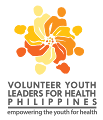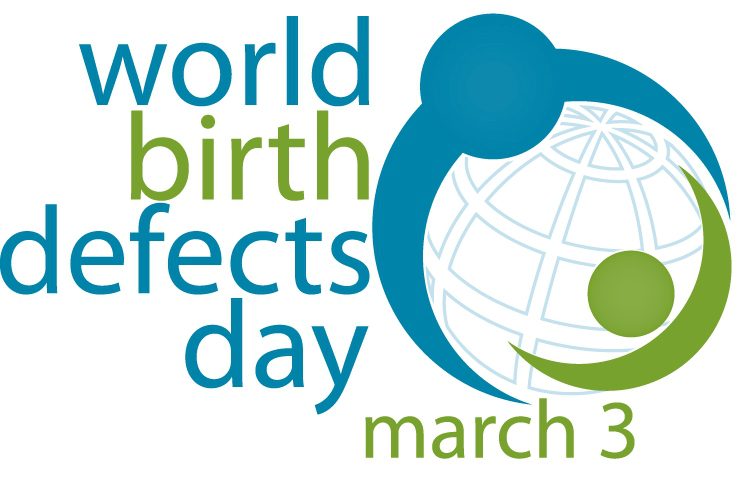Written by Joan Mae Barredo*
Naughty grins underline the faces of the participants upon hearing the activity’s title. Various side comments here and there are evident in the venue for about, say, 30 seconds or so. And then, 30 minutes after, what remains is that emphatic look of compassion in their eyes.
Baby Making 101 as springboard
In connection to the various advocacies of Volunteer Youth Leaders for Health [VYLH] Philippines, especially on Newborn Screening and Rare Orphan Diseases, Baby Making 101 activity is one good avenue for health representatives to level-off the participants. This is to serve as a launch pad for processing the experience-base advocacy dissemination event.
As the faces behind the concept of this health advocacy activity, me and my fellow volunteer Christine have deemed it more effectual if we would be able to deliver the different advocacies of VYLH to our target audience by taking hold of at least one simple aspect that would be considered true to, at least, the majority of the participants. What we have come up is the notion that all of us would want to have our own family someday. That, amidst the educational attainment and career ambition that we visualize, part of our wildest desires is to marry the one that we love, be a loving husband or wife and be a good father or mother to our kids. And that very dream served as the trigger point of Baby Making 101 and bought both the facilitator (me, in this case) and the participants back to the reality of taking good care of ourselves now for the realization of that dream.
Baby Making 101 activity for ADZU students
This activity was given to selected first year college students of Ateneo de Zamboanga University (ADZU) who were taking up FFP 102 (Freshmen Formation Program). They came from different departments and colleges in the university. I was able to ask the support of the current FFP-NSTP Coordinator, Mr. Alex Aballe, who then helped me request for the equal support from the different identified FFP formators. The activity proper was held in their respective classrooms during the week-long commemoration of the National Rare Disease Week on February 22 to 29.
The 9-minute production
Depending on the number of male and female participants, the entire audience was divided into smaller groups of fives, fours, or threes. But as far the this activity was conducted, the most effective number in every division is two—one male and one female participant. They have “produced” their babies as a pair. They were asked to determine the sex of the child and to give their first-born a name (a family name is optional). But the emphasis went to the various physical attributes that they want their baby to possess while growing up. A big part of it was also determining the different talents and skills they, as parents, would want their child to develop.
Some came up with average outputs. While others have really exerted effort and made efficient use of the time allotment. It was as if every detail was very much imperative—from the eyes to the nose, from the hair to the toes. Even listing the different physical attributes and talents of their child seems to be a very exciting point for them. That their child should be like Phil Younghusband and play for Azkals someday, that their child will be the next Charice or Arnel Pineda, that their child would even be the successor of P-noy . But the most difficult part? “Ang magbigay ng pangalan ‘te, as in, nag-aaway na kaming mag-asawa,” one pair light-heartedly banters when asked which part of the activity they find complicated.
Still depending on the available time, a number of pairs or groups was called and introduced their babies at the plenary after nine minutes has passed. Some were so eager to volunteer while some found it embarrassing to show their “masterpieces” in front of their fellow participants. “Nakakahiya kasi ‘te, magtenta ‘yan sila, lalo na alam nila na crush ko siya,” one boy blushes as he shares why they would not come in front the first time I called them.
People who have introduced their babies in the bigger group were asked to highlight the physical attributes of their first-born more than the other items. There were some who conferred with the traditional tall, dark, and handsome, while some have really focused on having a well-defined body, physically fit, strong and healthy.
Relating to Dickoy’s story
After I have processed their outputs from the Baby Making 101 Activity, I have subtly segued to the different advocacies that were actually the main agenda of the event. I have done this by underlining the notion that on another side of reality, not everyone is to be born to this world with those attributes—that one out of 20, 000 babies would not become tall, dark, and handsome, and would grow up with a rare orphan disease. To elevate this awareness, I have shown them Dickoy’s story and how he embodies the word ‘inspiration’.
“Nakakalungkot, pero masaya,” this ironic statement were given by one of the participants after they have watched the ten-minute film. “Malungkot kasi lumaki siyang may ganun (Pompe Disease)... pero pinarealize niya sa akin, ewan ko sa iba, na dapat pa nga mas maging thankful ako kasi normal ako,” he finishes his statement with that evident spark in his eyes and glimmer in his smile.
Since this activity was conducted to highlight the National Rare Disease Week, I have stressed on a few information about rare diseases such as the Hunter Syndrome, Charge Syndrome, Rett Syndrome, and Pompe Disease and the realities that children are experiencing because of having these kind diseases, especially about social abandonment. And every time I hear myself talk about these things, I always feel a certain hurtful pang in my heart. That I always feel that bittersweet sensation every single time I get to finish watching and listening to Dickoy’s story.
Then, I connected this part to the idea that them, as participants and as young people, can actually do something to help kids with rare diseases. I have encouraged them to sign-up for the signature campaign for the early deliberation and enactment of the Rare Disease Act of the Philippines. And then, I have distributed Pink Brochures and also encourage them to “pass the message” on to people who would benefit it like mothers-to-be or people from barangay health centers or anybody the like.
I concluded the session with the message that everyone, indeed, has a right to life... and a right to quality life. That includes children with rare diseases, their (participants) babies-to-be, and even they themselves. And as I hear myself say this in front of my fellow young people, with that spark in their eyes and glimmer in their smiles, I knew that I will always be a health advocate by heart and continue to give Baby-Making-101-like activities to relay health advocacies today and the days to come.
*Joan Mae Barredo is the current Coordinator for Advocacy and Development of the Social Awareness and Community Service Involvement (SACSI) Office of Ateneo de Zamboanga University (ADZU). She finished her BS Mass Communications degree in ADZU last 2011. Joan became affiliated to VYLH-Philippines as a representative of her university to the 2010 VYLH-Philippines Mindanao Island-wide Camp.




















